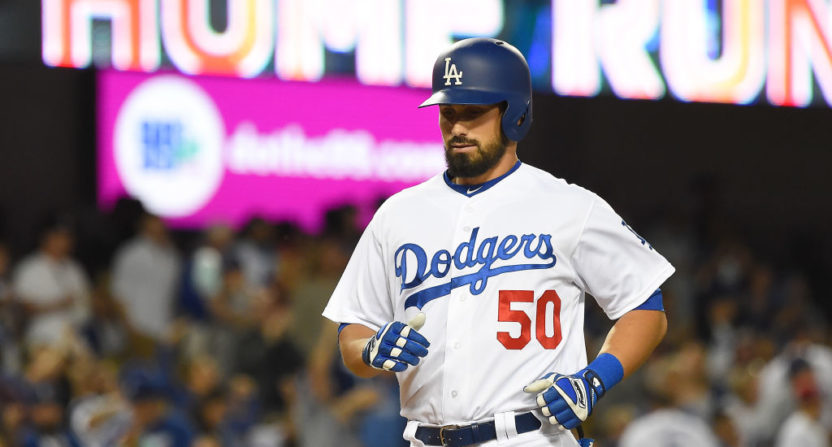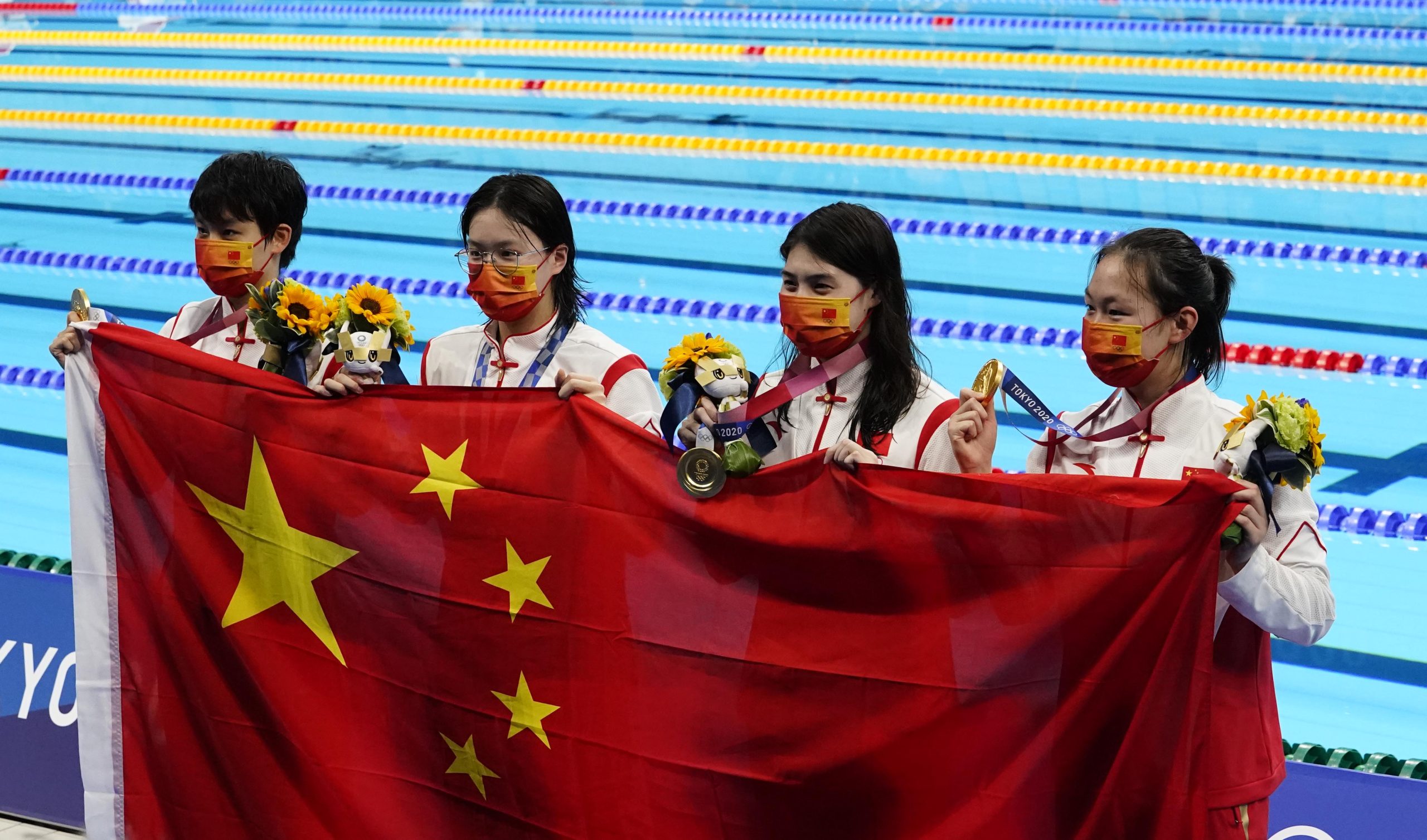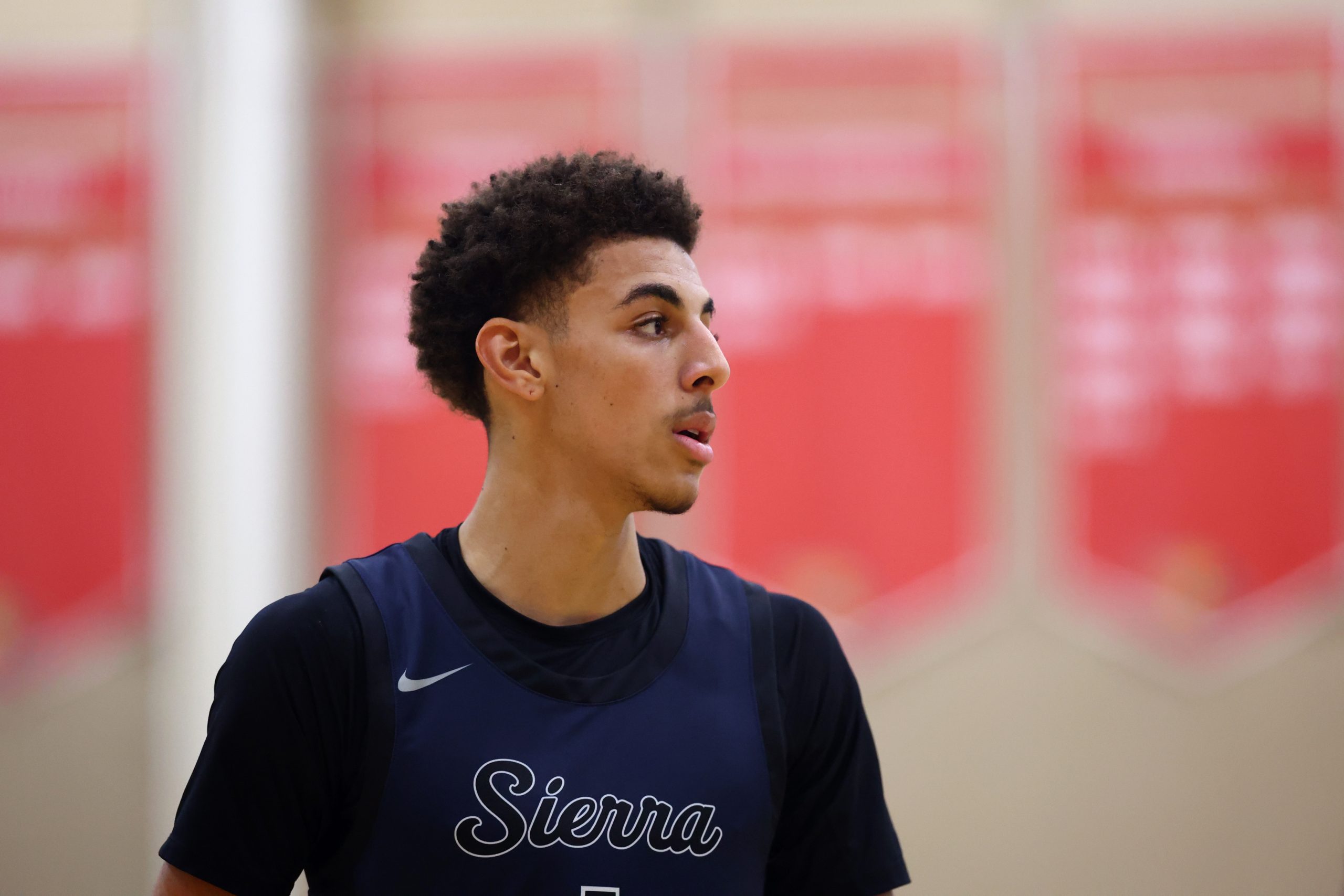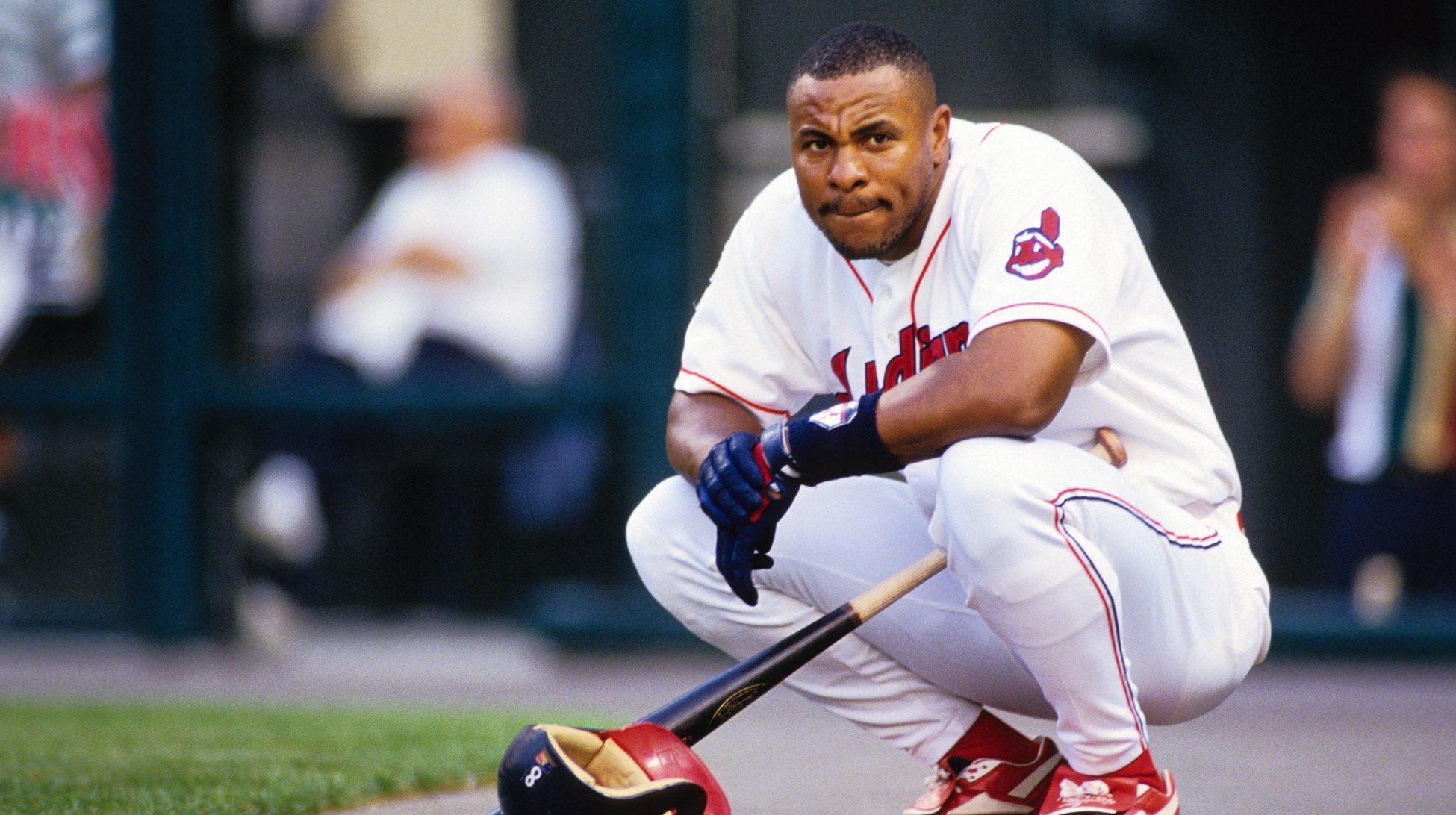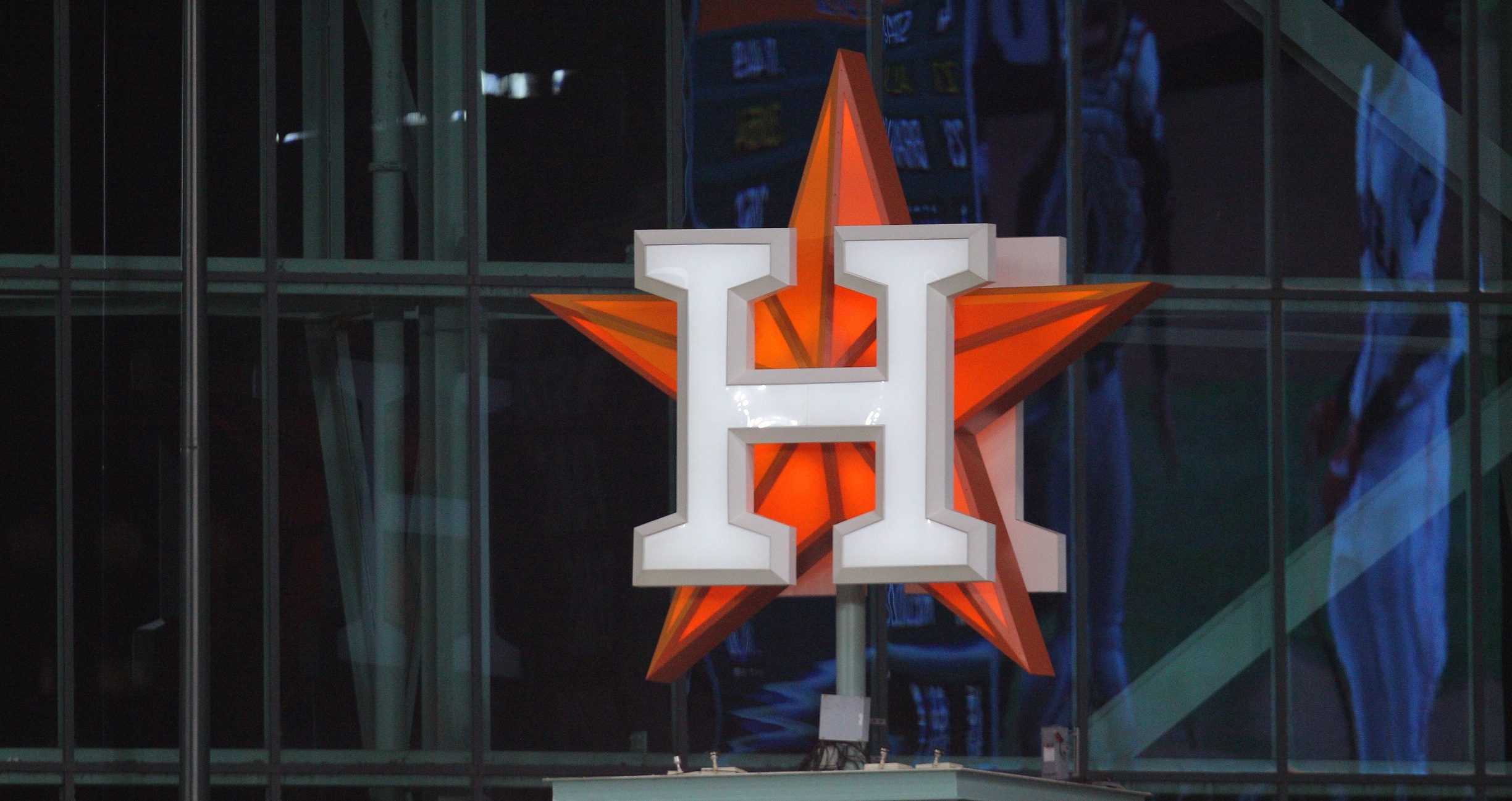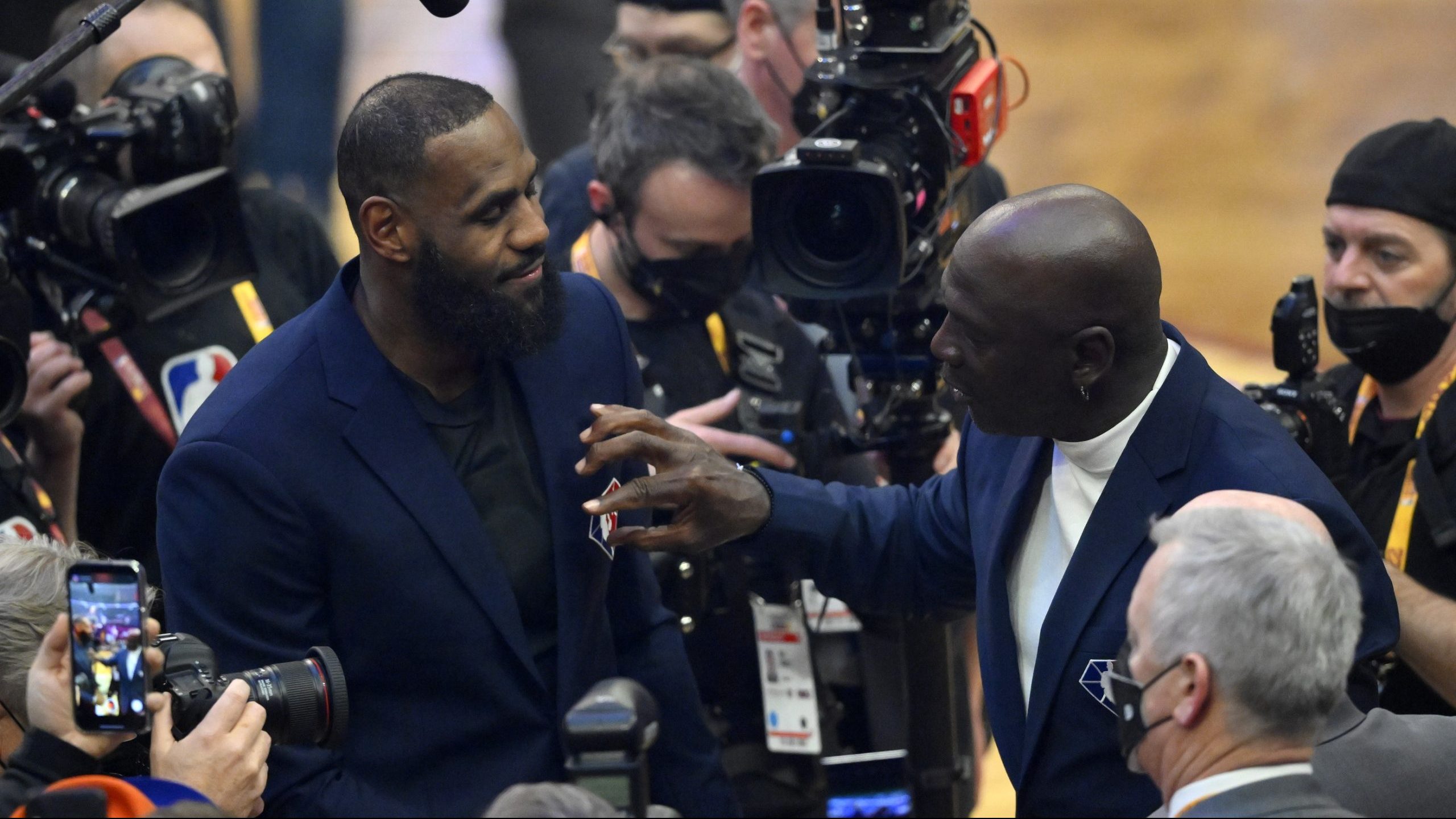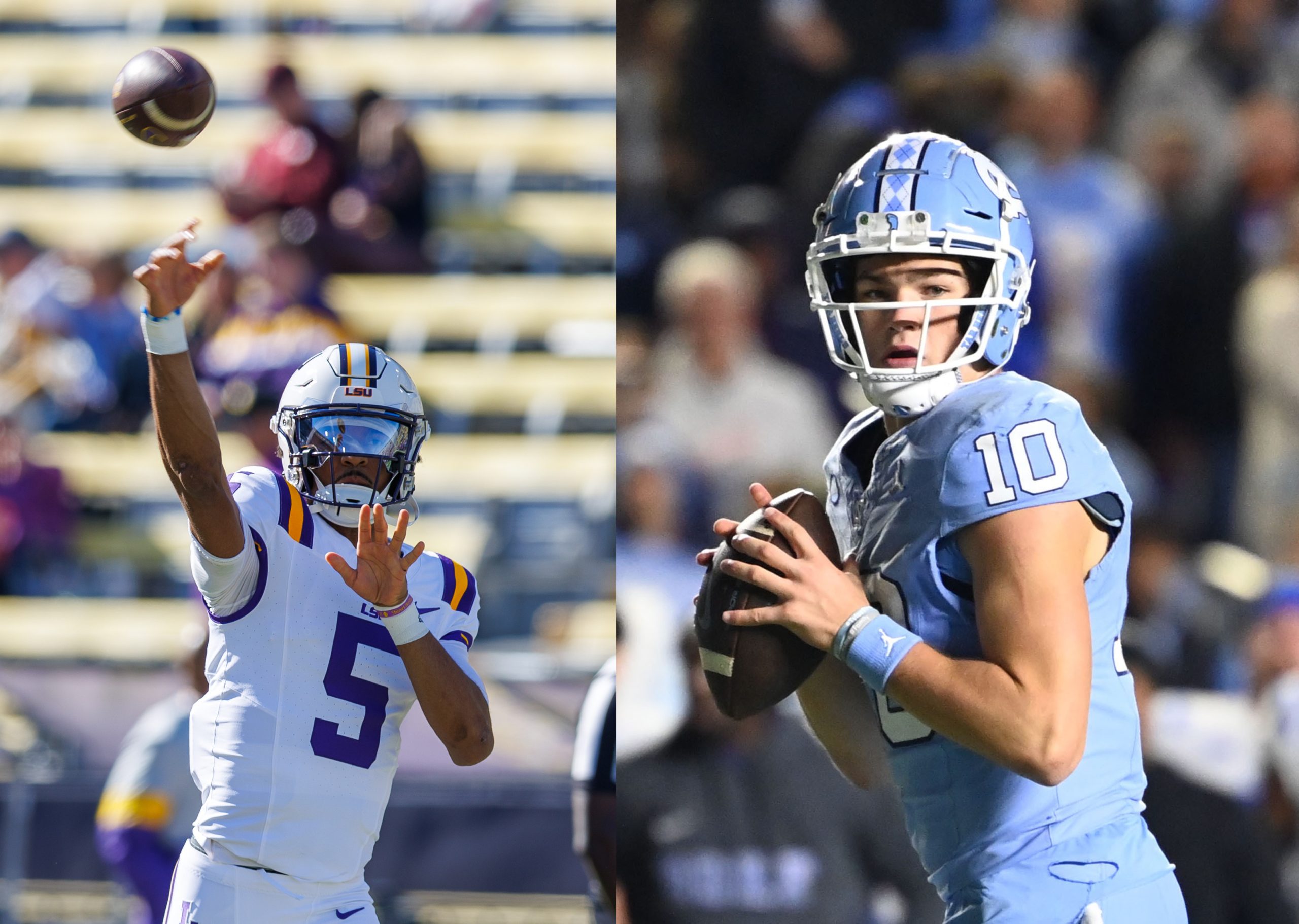On Sunday, the Los Angeles Times reported that the Dodgers could ask reserve outfielder Brett Eibner to dust off his college fastball and log some innings on the mound.
According to the Times, Eibner has already thrown some bullpen sessions in hopes of building arm strength and developing secondary pitches and that the team plans to continue developing him as a pitcher. The plan isn’t to convert him fully to a new position (which isn’t that uncommon), but rather to use him in the outfield and then put him on the mound when the Dodgers’ bullpen is particularly taxed. Basically, he would be a two-way player—one of only a few since the days of Babe Ruth.
The Dodgers’ plan isn’t so different from what the Padres attempted this spring with back-up catcher-turned relief-pitcher Christian Bethancourt. That experiment didn’t work so well—Bethancourt batted .143 and had a 14.73 ERA before being sent to Triple-A, where he has a 12.27 ERA—but it at least offered a template of what a two-way player might look like.
Christian Bethancourt, who joined El Paso today, told the Padres he wants to continue pitching.
— Dennis Lin (@dennistlin) April 27, 2017
The reason for the wacky roster manipulation is simple: Starting pitchers are going less deep into games than ever, necessitating more aggressive bullpen usage and, thus, more arms. But as teams carry 12 or 13 pitchers, they wind up with painfully short benches, precluding managers from platooning, pinch-running or inserting defensive replacements as much as they’d like to. One solution, the Dodgers theorize, is to have their fifth outfielder also be their eighth reliever.
It stands to reason that this kind of maneuver could become more common as teams continue to rely more heavily on their bullpens. Until MLB expands its rosters to 26 men, organizations will continue to either stretch their bullpen or work with a short bench—unless they have someone who can play both roles.
The dawn of the modern two-way player might not be confined to light-hitting outfielders who can pitch in a pinch. Beginning in 2018, we might see a hitter-pitcher hybrid emerge as one of the league’s best players. Twenty-two-year-old phenom Shohei Otani, Japan’s best pitcher and hitter, has announced his intention to come to the U.S. next year, and though it’s unclear if a team would really let Otani DH on days he’s not pitching, he has said he’d like to try.
Then there’s the next generation. In a Sports Illustrated cover story last month, talent evaluators acknowledged the possibility that high school senior Hunter Greene could play both ways in the pros. Fellow top draft prospect Brendan McKay also has the tools to either hit or pitch. It’s not terribly likely that either Greene or McKay will actually be allowed to blaze a trail for two-way players, but the fact the conversations are happening indicates some degree of openness.
Given that the Padres’ plans for Bethancourt haven’t gone as hoped, the Dodgers’ experiment with Eibner is worth watching. If he can’t throw strikes enough to earn a role in the bullpen or can’t keep the ball in the park once he gets there, baseball’s enthusiasm for two-way players might wane. But if he turns into a playable reliever while also serving as a capable back-up outfielder—thus occupying two roles in a single roster spot—other teams might take note.
And with Otani set to arrive stateside at any moment, the era of the two-way player might soon be upon us.

